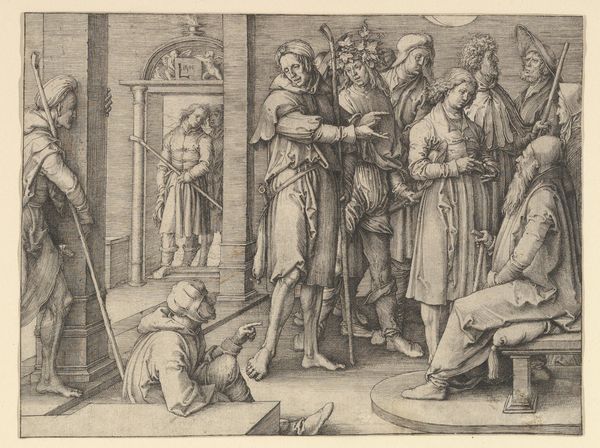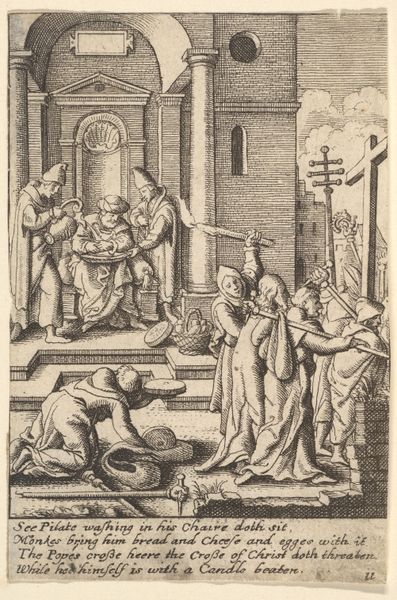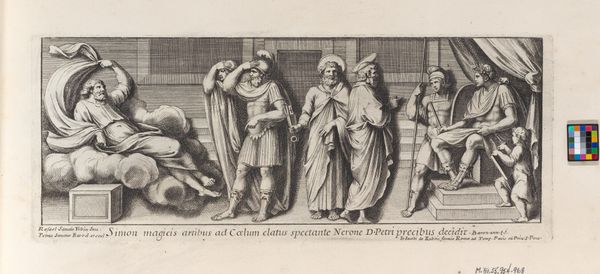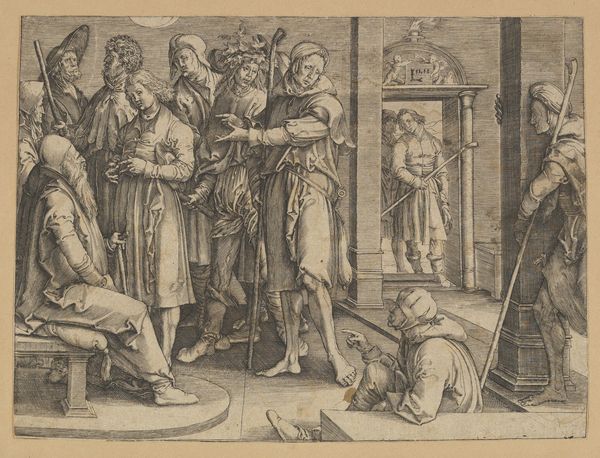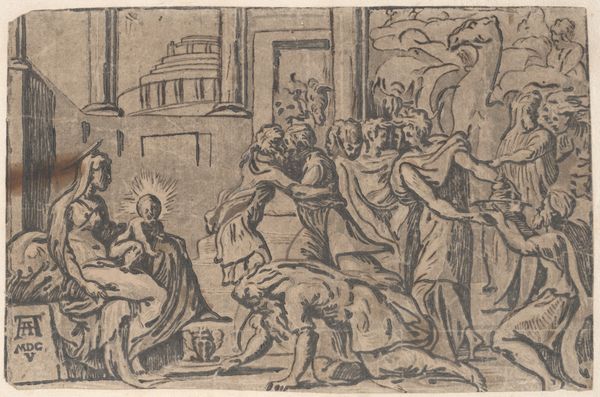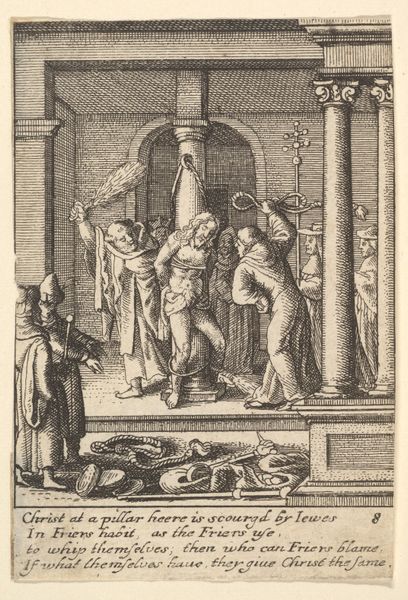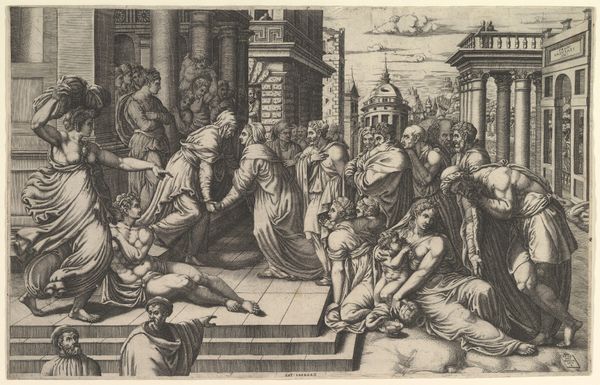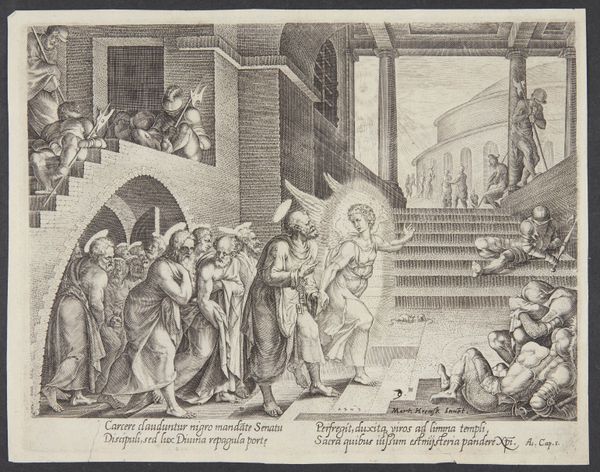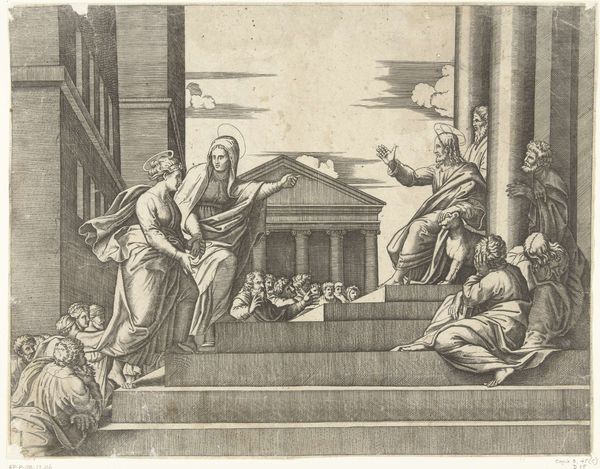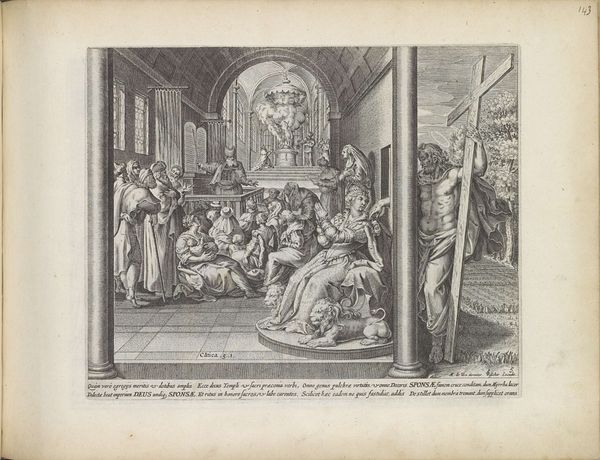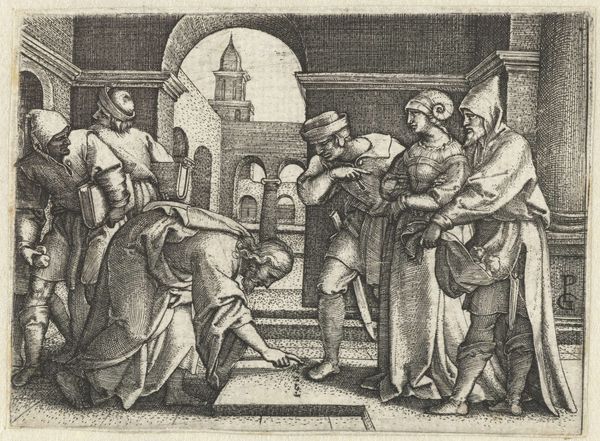
drawing, print, paper, engraving
#
drawing
#
allegory
# print
#
perspective
#
figuration
#
paper
#
form
#
11_renaissance
#
line
#
history-painting
#
italian-renaissance
#
engraving
Dimensions: 318 × 457 mm
Copyright: Public Domain
Curator: This is "The Calumny of Apelles," an engraving created sometime between 1500 and 1506 by Girolamo Mocetto. It currently resides at The Art Institute of Chicago. The work depicts a complex scene rendered meticulously with fine lines. Editor: Wow, the sheer drama of it all! My eyes dart all over this wide-angle perspective; all these symbolic figures enacting some elaborate, nightmarish trial right out of the psyche. It feels incredibly theatrical and kind of stressful. Curator: Indeed, the engraving visualizes an allegory. Mocetto takes inspiration from a description by Lucian of Samosata, who retells a painting by the ancient Greek artist Apelles. It critiques the dangers of false accusation and the corruption of justice. Editor: Right, and that "Ignorantia" figure hovering behind the king with the donkey ears. So direct, almost cartoonish in its condemnation. And then the figure of "Invidia," or envy, looking particularly gruesome! It makes me wonder what triggered Mocetto to address the subject of political paranoia in this particular moment in time. Curator: What I find striking is how he’s structured this condemnation in the Renaissance style, complete with inscriptions identifying the virtues and vices at play: suspicion, deceit, innocence, repentance and truth are each made personified and present for our judgement. It blends a contemporary moment of civic values with a timeless warning against rash judgment. Editor: I appreciate how the architectural setting acts as a grand stage; like truth and lies have these established, formal platforms on which to act out their drama. It sort of softens the emotional blows with logic, no? I'm interested in where you see the timelessness within this. Curator: The key is that the themes depicted: lies, malice, unchecked authority, have echoed throughout art and history. The images trigger something deep. The emotional charge comes from acknowledging how we all can become susceptible to the forces visualized here. That's why its relevance endures across cultures. Editor: It is pretty enduring, all said, the way such heavy themes could have that impact and continue on to this day. An awful indictment of us, and a fine reminder for anyone to step back and think.
Comments
No comments
Be the first to comment and join the conversation on the ultimate creative platform.

